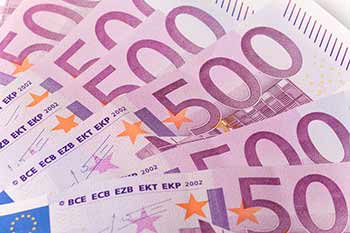The Euro to US Dollar (EUR/USD) exchange rate recovered more ground as Thursday’s session progressed despite economic data showing that German inflation fell into deflation territory for the first time since 2009.
Economists are now forecasting that Friday’s Eurozone flash inflation data is expected to weaken.
Data released by the Washington based Labour Department showed that the number of individuals filing for initial jobless benefits in the week ending January 24 decreased by 43,000 to 265,000 from the previous week’s total of 308,000.
Earlier the Euro to US Dollar (EUR/USD) exchange rate recovered some ground but remains mired at an 11-year low as data showed that economic sentiment across the Eurozone and unemployment in Germany improved.
The EUR/USD exchange rate hit a session high of 1.133
The US Dollar had initially surged higher against the single currency as speculation increased that the US Federal Reserve will be the only major central bank to raise interest rates this year. Fed policy makers maintained their pledge to take a ‘slow and steady’ approach when considering raising rates.
The central bank also said it expected inflation to keep declining in the short term and added that it would consider “financial and international developments” before deciding when to hike borrowing costs.
With the European Central Bank (ECB), Bank of Japan (BoJ) and other peers expecting to cut either interest rates or loosening policies the Fed is the only one looking likely to tighten policy. Most economists expect the Fed to begin hiking interest rates in the middle of this year.
‘All roads lead to a higher US Dollar. The Fed’s the only one that people can see tightening this year,’ said Joseph Capurso, a currency strategist at Commonwealth Bank of Australia.
German and Sentiment Data Supports Euro
The Euro exchange rate edged higher after data released by the German Federal Statistics Office showed that the number of people out of work in the Eurozones largest economy dropped for a fourth consecutive month in January. The number fell by 9,000, just shy of expectations for a decline of 10,000.
The data also showed that Germany’s unemployment rate fell to a record low of 6.5% after Decembers level was revised higher to 6.6%.
In addition, offering support to the Euro was a separate report released by the European Commission, which showed that morale across the Eurozone rose at the start of the year, as consumers appeared to be more optimistic in Germany, Italy and Spain. Divisions were apparent however as sentiment fell in the Netherlands and Franc.
The Commission now expects the Eurozone economy to pick up this year and to achieve modest growth in 2016.
The US Dollar is forecast to once again head higher later in the session as the latest US Jobless Claims and Pending home sales data is expected to come in strongly.



